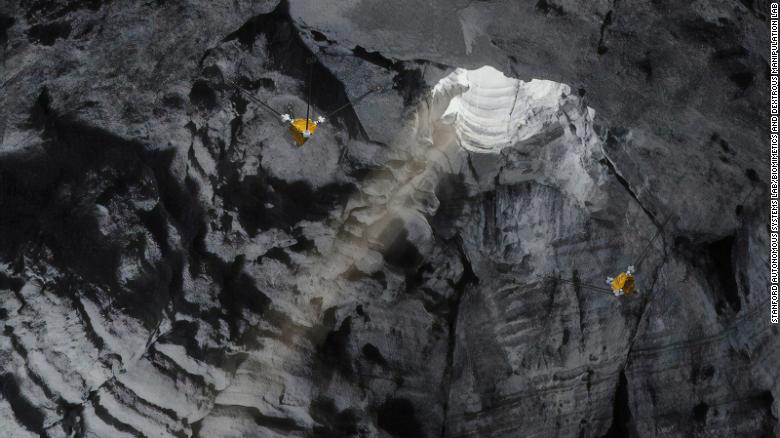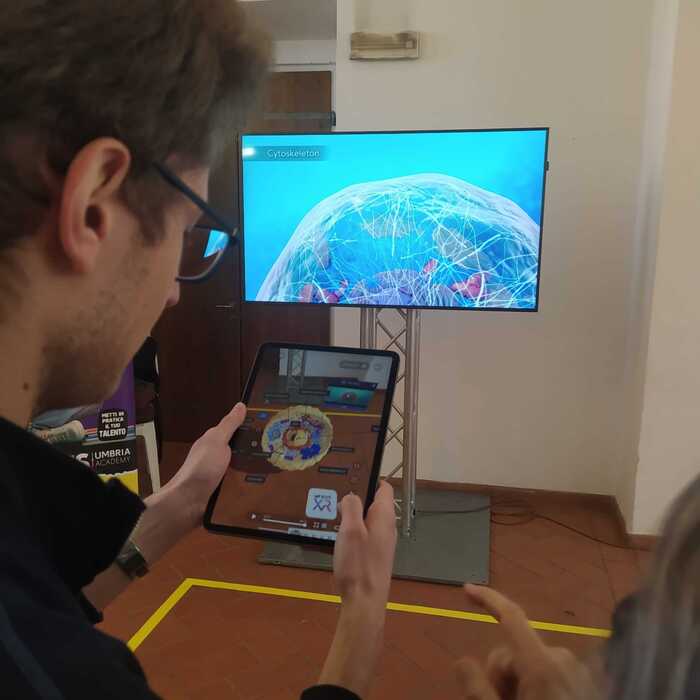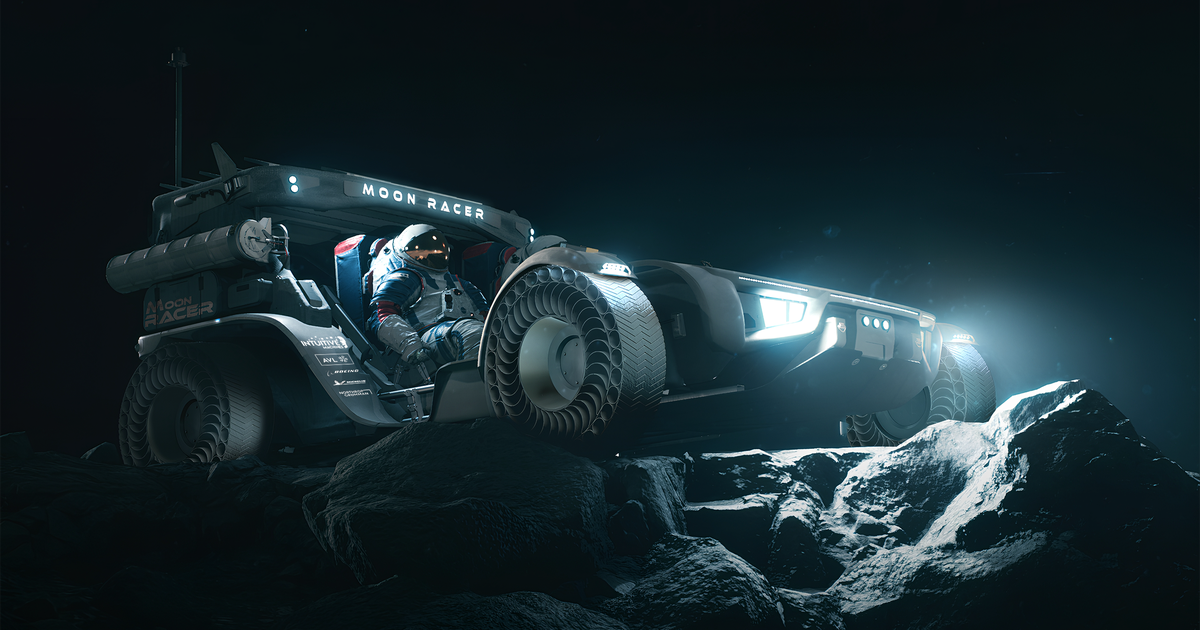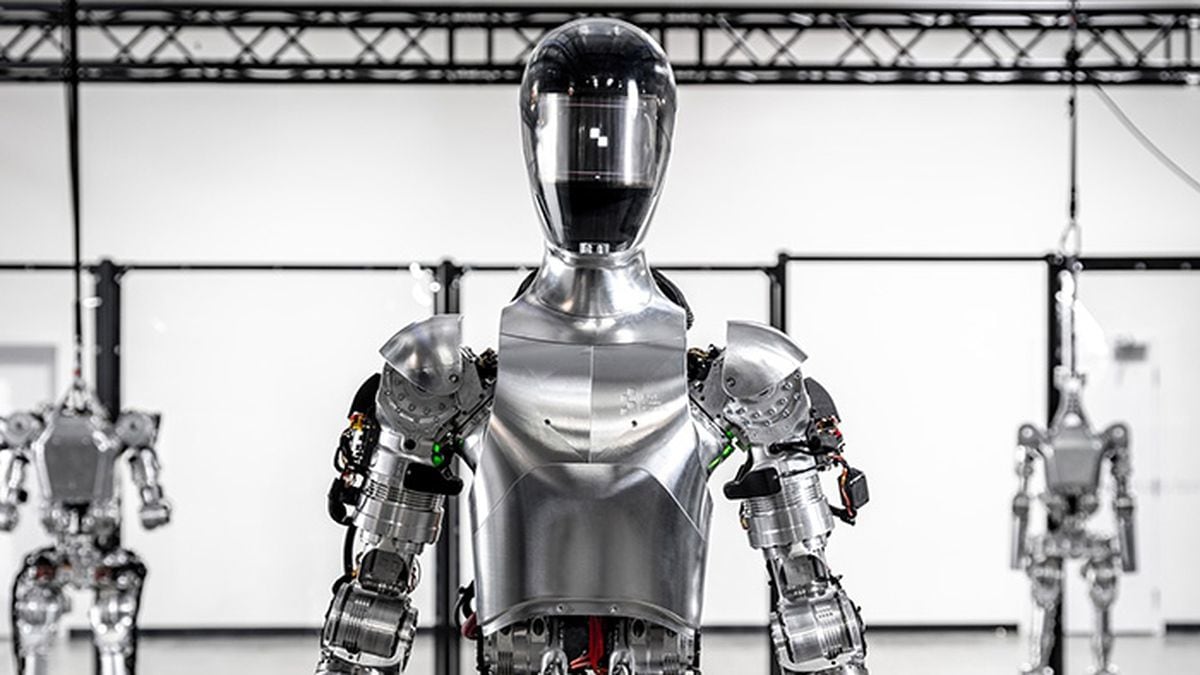NASA suggests a new method to find life on Mars 1:03
(CNN) --
Exploring beneath the surface of other planets may hold the key to determining whether life has ever existed outside of Earth.
As other missions, including NASA's InSight lander, have shown, drilling into the surface of planets like Mars is hard, a little too hard to go more than a few inches underground.
Recently, the Curiosity rover measured total organic carbon, a necessary ingredient in the molecules of life, in Martian rocks for the first time.
But it doesn't prove that life ever existed on Mars, because carbon can also be produced by non-living sources.
An artist's concept shows ReachBot using its extendable arms to explore a Martian cave.
New research suggests that the best chance of finding past or present evidence of life on Mars requires going below its surface, at least 6.6 feet (2 meters) below.
Mars has an incredibly thin atmosphere, which means the Red Planet's surface is bombarded by high-energy radiation from space, and that could rapidly degrade substances like amino acids that provide fragile evidence of life.
Those harsh surface conditions also present a challenge to astronauts, which is why scientists have suggested that caves on other planets could hold the key to future exploration.
Vast cave systems on the Moon and Mars could act as havens for future space travelers.
China's Mars probe has already photographed the entire red planet
Caves could also contain resources such as water, reveal more about a planet's history, and be havens for evidence of microbial life.
On Earth, there is a diverse range of cave systems, many of which remain unexplored, and are home to diverse groups of microorganisms.
But caves are dangerous, and since we've never looked inside a Martian cave, it's hard to know what to expect.
advertising
Before humans land on Mars and explore its subsoil, a group of scientists wants to send ReachBot, a robot designed to crawl and climb through alien caves.
ReachBot could also be used to explore lunar caves to see if astronauts could use them as a resource.
A caving robot
The idea for ReachBot was born in 2018 when Marco Pavone, director of the Autonomous Systems Laboratory at Stanford University, and his students brainstormed concepts for a Martian cave explorer.
They knew that the robot would have to be able to grab anchor points in order to move without falling over, and if it couldn't find enough anchor points, it wouldn't get very far.
One of his students suggested the idea of a small robot with extendable arms that extend like a tape measure, which could be used in the same way that Spider-Man shoots webs to help him navigate the New York City skyline.
The robot concept is the size of a basketball and a toaster oven and is covered with extendable arms equipped with spiny pincers that could grasp objects and grab or push the steep, rocky surfaces of Martian caves.
It would be able to anchor and crawl long distances.
When the robot arms are not needed, they roll up out of the way.
Pavone, who is also an associate professor of aeronautics and astronautics at the Stanford University School of Engineering, and his students came up with the idea for a robot with extendable arms.
They created a proposal to submit to NASA's Innovative Advanced Concepts Program, which funds visionary concepts in the field of space robotics that could transform future missions.
The ReachBot concept received Phase I funding, which the team used to conduct a series of studies that showed the concept was feasible, Pavone said.
This illustration shows how ReachBot would connect to a rover on the Martian surface.
Now, ReachBot has received funding for Phase II.
The team will use the next two years to work on 3D simulations, a prototype robot, develop strategies that help the robot avoid risks, and test ReachBot in a realistic mission environment, likely in a cave in New Mexico or California.
These tests will determine how ReachBot could be used for future exploration.
Exploring under Mars
If ReachBot becomes its own mission, it will likely rely on a larger, more capable robot, such as a rover, to access the caves it will explore.
The rover will either carry ReachBot to the cave entrance or drop it off on a cliff face, which ReachBot could climb.
ReachBot is likely to be equipped with cameras, microscopes, and a remote sensing method called LIDAR.
But the instruments require power and add weight, in addition to the power and communication system that the robot will need.
The Perseverance rover made a friend on Mars
The team envisions that ReachBot will be connected to the surface-bound rover, which can provide power and act as a communications relay, said Stephanie Newdick, a doctoral student in aeronautics and astronautics at the Stanford University School of Engineering.
In addition to sending data to the rover, ReachBot may also have a conveyor belt system that allows it to collect samples and send them back to the surface.
The rover will be larger and will have instruments that can analyze the samples in detail, Newdick said.
Any initial ReachBot findings can determine the next step for follow-up missions.
"Caves are risky environments, but they are scientifically interesting," Newdick said.
"Our idea for this robot is to go far before people get there to do interesting science and explore the area."
future destinations
Martian caves are just one possible opportunity for a robot like ReachBot.
Pavone sees the potential for these robots to operate alongside humans in a place like the International Space Station, handling some tasks so astronauts can make better use of their time.
The Gateway, a planned lunar outpost that will exist between Earth and the Moon, will not be manned all the time like the space station.
Robots like ReachBot could perform maintenance and maintenance tasks, Newdick said.
ReachBot could also crawl inside lunar caves that can serve as a resource for astronauts exploring the moon.
ReachBot can also be useful in environments like the International Space Station or the Gateway.
In the future, the team believes the ReachBot could be customized to its destination, influencing design options such as its size and the number of extendable arms, Pavone said.
The ends of ReachBot's arms could also be equipped with scientific instruments that can get into tiny cracks and crevices where a robot wouldn't fit.
With so many capabilities, the team sees their creation as a way to further explore our solar system, going places humans can't yet tread.












/cloudfront-eu-central-1.images.arcpublishing.com/prisa/KMEYMJKESBAZBE4MRBAM4TGHIQ.jpg)


